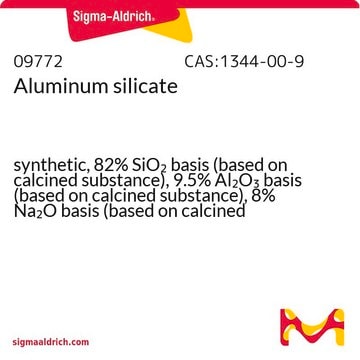556130
Bismuth
pieces, 1-12 mm, 99.999% trace metals basis
Sinónimos:
Bismuth element, Bismuth-209
About This Item
Productos recomendados
presión de vapor
<0.1 mmHg ( 20 °C)
Análisis
99.999% trace metals basis
formulario
pieces
resistividad
129 μΩ-cm, 20°C
tamaño de partícula
1-12 mm
bp
1560 °C (lit.)
mp
271 °C (lit.)
densidad
9.8 g/mL at 25 °C (lit.)
cadena SMILES
[Bi]
InChI
1S/Bi
Clave InChI
JCXGWMGPZLAOME-UHFFFAOYSA-N
¿Está buscando productos similares? Visita Guía de comparación de productos
Categorías relacionadas
Descripción general
Aplicación
- Research Update: Bismuth based materials for photovoltaics: This research update briefly summarizes the developments in bismuth materials for use in photovoltaics, focusing on bismuth-based perovskites and bismuth halides (Cates & Bernechea, 2018).
- Bismuth-based photocatalysts for solar energy conversion: This study reviews bismuth-based photocatalysts, which are gaining attention for their efficiency in solar energy conversion (Wang, Wang & Huang, 2020).
Código de clase de almacenamiento
11 - Combustible Solids
Clase de riesgo para el agua (WGK)
nwg
Punto de inflamabilidad (°F)
Not applicable
Punto de inflamabilidad (°C)
Not applicable
Equipo de protección personal
Eyeshields, Gloves, type N95 (US)
Certificados de análisis (COA)
Busque Certificados de análisis (COA) introduciendo el número de lote del producto. Los números de lote se encuentran en la etiqueta del producto después de las palabras «Lot» o «Batch»
¿Ya tiene este producto?
Encuentre la documentación para los productos que ha comprado recientemente en la Biblioteca de documentos.
Los clientes también vieron
Nuestro equipo de científicos tiene experiencia en todas las áreas de investigación: Ciencias de la vida, Ciencia de los materiales, Síntesis química, Cromatografía, Analítica y muchas otras.
Póngase en contacto con el Servicio técnico







